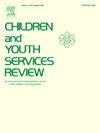Contextualizing social support networks of youth exiting foster care: A mixed methods examination
IF 1.7
2区 社会学
Q1 FAMILY STUDIES
引用次数: 0
Abstract
Policy efforts for youth aging out of foster care have focused on tangible skills for independent living, while less attention has been given to the role of social networks during this major transition, particularly in providing emotional and mental health support. This mixed methods study explores the composition, quality, and interconnectedness of the personal networks of youth aging out of foster care, focusing on types of support (e.g., material, informational, emotional, and mental health) using structured survey and network data, along with qualitative interviews. Participants (n = 75) averaged 19.9 years old, were predominantly female (72 %), and racially/ethnically diverse. Support network size ranged from 3 to 20 members (M = 8.9). Among 669 named network members, 37 % were family, 7 % foster family, 7 % intimate partners, 10 % other supportive adults, 19 % professionals, and 19 % friends. Almost 90 % of participants identified at least one person providing multidimensional support and all networks had at least one source of emotional support. However, over half of networks had 0–4 individuals providing material support and 21 % had only 0–2 members providing mental health support. Results indicated that professionals are important supports but may not offer lasting relationships post-care. Youth who exited care were more likely to include intimate partners, highlighting a key target for intervention. Network size did not correspond to perceived support, suggesting enhancement efforts should focus on strengthening existing ties, promoting interconnectedness, and bolstering resources available within the network. Transition planning that builds relationship skills with family, friends, and partners may foster relational permanence and multidimensional support. Implications for interventions focused on enhancing support networks during this critical transition are discussed.
青少年退出寄养的社会支持网络情境化:一种混合方法的检验
针对脱离寄养的老年青年的政策努力侧重于独立生活的实际技能,而对社会网络在这一重大转变期间的作用,特别是在提供情感和精神健康支持方面的作用关注较少。这项混合方法的研究探讨了青年老龄化的个人网络的组成、质量和相互联系,重点关注支持的类型(例如,物质、信息、情感和心理健康),使用结构化调查和网络数据,以及定性访谈。参与者(n = 75)平均年龄19.9岁,主要是女性(72%),种族/民族多样化。支持网络的规模从3到20人不等(M = 8.9)。在669名被点名的网络成员中,37%是家庭成员,7%是寄养家庭,7%是亲密伴侣,10%是其他支持他们的成年人,19%是专业人士,19%是朋友。几乎90%的参与者确定至少有一个人提供多维支持,所有网络都至少有一个情感支持来源。然而,超过一半的网络有0-4个人提供物质支持,21%的网络只有0-2个成员提供心理健康支持。结果表明,专业人员是重要的支持,但可能无法提供持久的关系后护理。离开护理的青年更有可能包括亲密伴侣,这突出了干预的一个关键目标。网络规模与感知到的支持不一致,这表明加强工作应侧重于加强现有联系,促进相互联系,并支持网络内的可用资源。建立与家人、朋友和伙伴的关系技能的过渡计划可能会促进关系的持久性和多维支持。讨论了在这一关键转变期间着重加强支持网络的干预措施的影响。
本文章由计算机程序翻译,如有差异,请以英文原文为准。
求助全文
约1分钟内获得全文
求助全文
来源期刊

Children and Youth Services Review
Multiple-
CiteScore
6.30
自引率
6.10%
发文量
303
期刊介绍:
Children and Youth Services Review is an interdisciplinary forum for critical scholarship regarding service programs for children and youth. The journal will publish full-length articles, current research and policy notes, and book reviews.
 求助内容:
求助内容: 应助结果提醒方式:
应助结果提醒方式:


